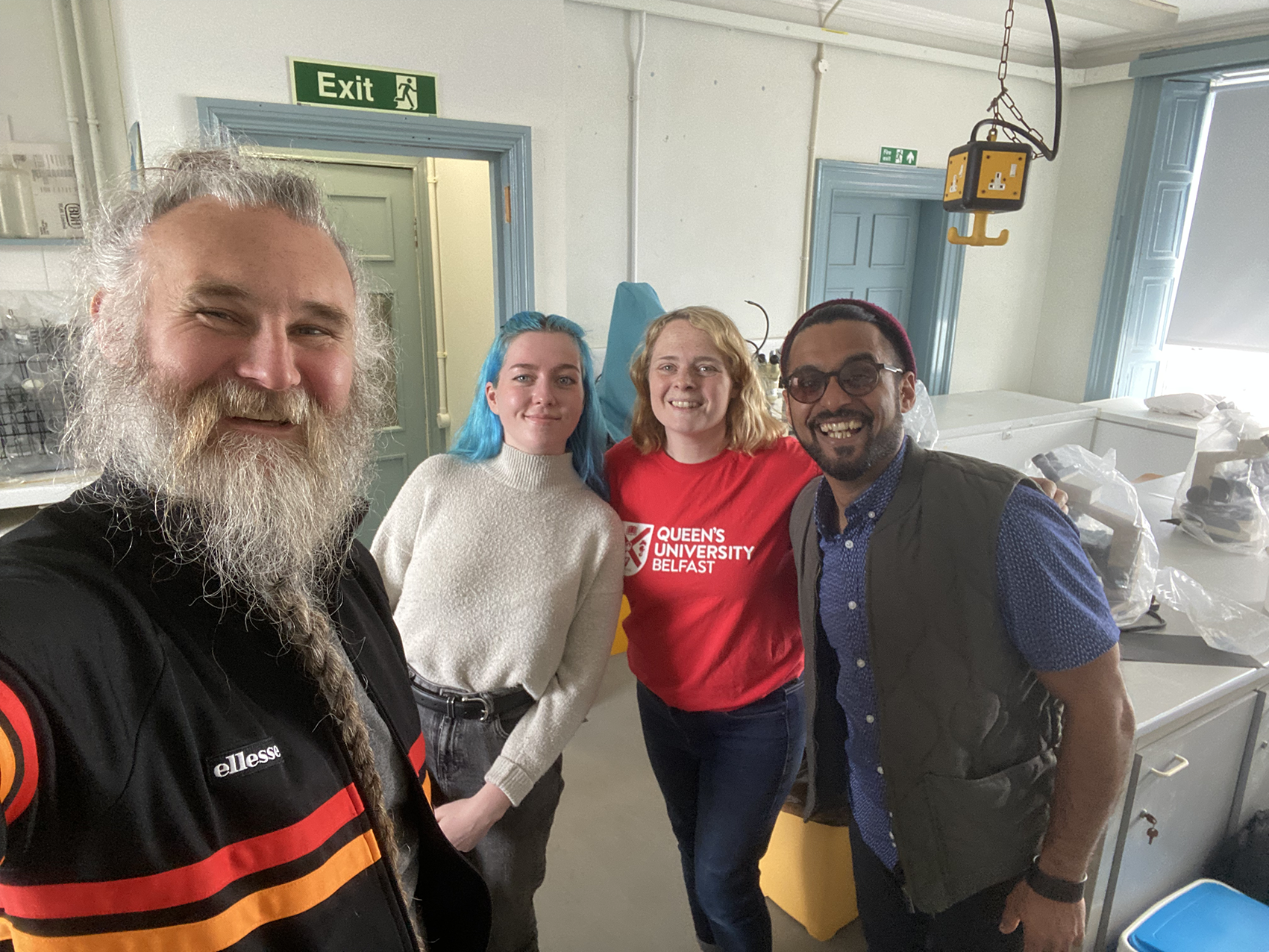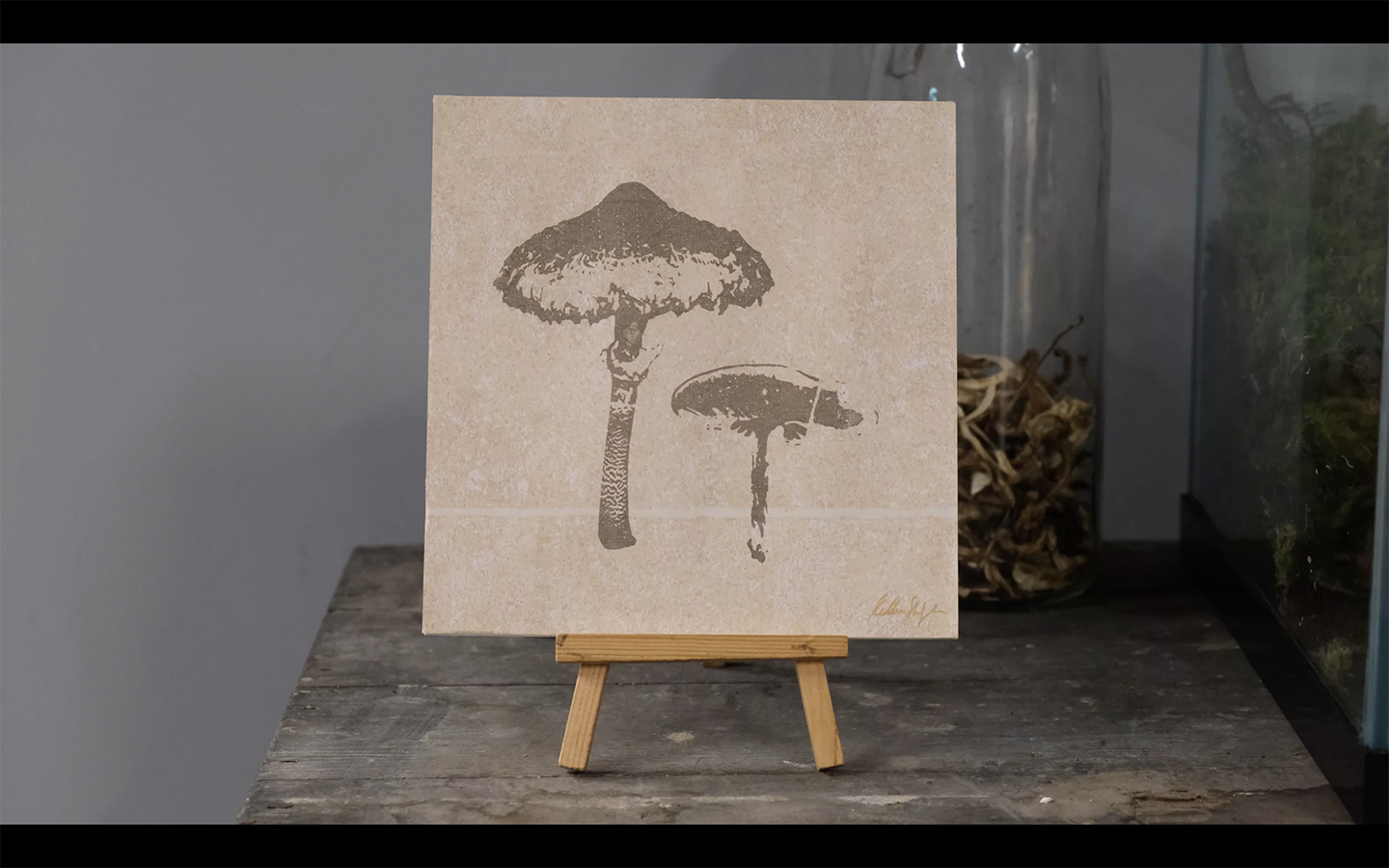We Are One
Mycelium sculptures
Mother Earth has become increasingly under-represented in our human-centric world through the act of human being. The harmony that all of earth’s cultures once had, that are explicit in language, song, food and ritual, is on a rapid decline, and urban societies are becoming increasingly disconnected from the planet that keeps us alive.
The interconnectedness of life is best represented through mycelium, sometimes called the wood-wide-web, the network that exists under our feet, allowing the plants to talk around us, to pass the nutrients that each other require to live in harmony, and that fruit the fungi that keeps the worlds ecosystems alive.

Mycelium Phase 1 Team
The sculptures will be produced in a partnership with the School of Biological Sciences and Hearty Growers.
The mycelium sculpture forms will be placed in a number of urban and rural locations to look like they are climbing out of the ground, and will be filmed and photographed in those locations.
The locations may be coastal, urban, forests and identifiable tourist locations to maximise public engagement and photo opportunities across the island of Ireland, ultimately coming to rest in Belfast for an exhibition of the pieces, and the imagery of their tour of the island.
The pieces will then return to natural locations to go back to Mother Earth.
For over a decade Gawain Morrison has wanted to produce mycelium sculptures, but not known how to do it. With the help of the legend that is Professor Mark Emmerson, a community ecologist focussing on the effects of biodiversity change on ecosystem functioning and stability, and co-director of the Climate+ Co-Centre, Mark has helped to approve the facilities, and Emma Healey the technician at the Portaferry Marine Lab, has helped to make it possible to experiment with the mycelium sculpture project.
In early 2024 the Arts Council of Northern Ireland awarded Gawain the ‘Support for Individual Artist’ award, and the Climate+ Co-Centre has helped us with funding and facilities.
We approached Terry & Carly from Hearty Growers, urban mushroom farmers, to be our mycelium guides for this project.
To produce mycelium sculptures, we need to experiment with different spores & substrates. In terms of this project, where we want to grow mycelium quickly, with certain substrates, and with certain robustness in the conditions that we want to work with, we are going to work with Oyster mushroom spores. Different kinds of mushroom spores work differently in certain conditions.
We experimented with sawdust & straw as substrates, mixed with oyster mushroom spores & agar jelly, to help bind it all together (combinations below). We produced a range of options for the initial test, eg star & agar; straw, sawdust & agar'; straw & agar, etc. Once the mixes were all sealed, we placed them in a dark room for two weeks. The winning mixture will be the one that we then proceed to sculpting with.
The Process






The Sculptures
We have been considering a range of options to grow, sculpt, and stitch the pieces together. Over several weeks we experimented with combinations to determine the best mixes, the best timeframes and the best way to stitch all of the mycelium body panels together.
Phase 1: The mycelium process
The production phases are to experiment with substrate and spores, produce squares of mix, from which we can determine the most suitable mix between sand, straw and agar jelly,
The most suitable mix came out as straw, agar and spores, so these will be used to experiment with sculptural forms; after which the actual pieces will be produced, photographer around locations in Ireland and an exhibition produced.
Phase 2: The root matt process
The first phase of this project was to identify the types of spores, the types of substrates, and the various quantities of both & the conditions to achieve adequate mycelial growth for this sculptural process.
We achieved this using oyster mushroom spores, and a straw & agar substrate, left to incubate for 3-4 weeks.
Next was to identify the ‘skin’ and armature materials so that the substrate has a human structure form.
In the previous lab sessions we discussed what that could be & Carly suggested using microgreens, like chia seeds, that could grow quickly, and provide a root matt sheet, that could be used as the skin.
So this second phase has been to experiment with growing the root matt panels, with different densities of seeds, water & seed types.
After my own experiments over a couple of months I I have now approached Anita Yakkundi, of Ausome Growsome, who specialises in growing microgreens, to assist in the growing of the final seed matts, since she will harvest the greens & would normally just compost the root matts.












Chia seed, both grown on a cotton sheet, and grown as seed-only in trays, worked really well. The roots were dense, and bind together as a fabric panel really well.
When I discussed these with Anita & showed what I’d grown, she offered a couple of suggestions for growing in their aquaponics space.
So over the coming weeks Anita & her team will plant seeds in hessian sacks & then make sure the water & nutrient counts are perfect, and they will give me a shout when ready to harvest.
Next phase will be to grow a larger amount of panels, to provide the square meterage that I require to make the sculptures.
Phase 3: Growing the skin
The Final Pieces
The mycelial process takes time, and once you have a notion of how to get the substrate & spore mixture correct, and from a sculptural perspective when you figure out the skin & armature structure, you can then play with the fruiting positions, to produce limbs and extrusions for the mushrooms to produce from.
These two sculptures are what resulted - daytime shots of the mushrooms fruiting, night time shots after they have begun decaying.
This project has been supported by the National Lottery through the Arts Council of Northern Ireland













